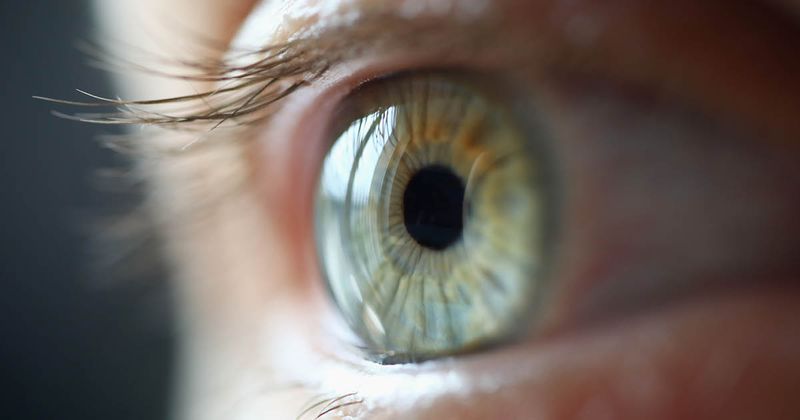To the editor:
The article “Case report: Amblyopic reversal in an adult” by Kumar and colleagues in the March 10, 2024, issue of Healio | OSN reports on a 49-year-old woman who “showed spontaneous improvement of visual acuity in the amblyopic eye following loss of vision in the contralateral sound eye.”
The authors attribute the visual acuity improvement to a spontaneous resolution of unilateral anisometropic amblyopia after contralateral loss of vision. They suggest this is due to ocular plasticity and visual cortical modification in an adult, processes that we generally only consider possible in young children. A careful look at the refraction before and after the visual recovery, however, offers a much simpler explanation for visual acuity improvement: correction of refractive error by manifest refraction. The pre-recovery manifest refraction was given as +3.75 –2.50 × 10, which corrected the eye to 6/18. Notably, her contralateral eye easily refracted to 6/6 with a much smaller –0.5 D spherical refraction. After the loss of vision in this contralateral eye, a repeat refraction revealed the eye’s true refractive error: +3.50 –4.50 × 10, with a resulting visual acuity of 6/9. Further, a contact lens improved the visual acuity to 6/6. This 2 D increase in astigmatism on refraction can easily explain her improved visual acuity.

Image: Adobe Stock

Contact lenses often offer additional benefit in such cases of large mixed astigmatism, which explains the further improvement with its usage. Correcting a large anisometropic mixed astigmatism such as this is generally cumbersome, requiring an asymmetrically large pair of glasses or a contact lens, which likely patient and clinician both were simply unwilling to attempt given the excellent vision from the contralateral sound eye; once it became the only option for high quality vision, renewed interest from both patient and clinician resulted in finding the true refractive correction of the eye. It is likely that if the eye were presently provided the original refraction, it would still only correct to approximately 6/18. In order to convincingly attribute the improvement in visual acuity to resolution of amblyopia, a simultaneous explanation for the sudden increase in myopic astigmatism must be provided, such as might be encountered with a growing orbital tumor or progressive keratoconus. The authors offered no reason to suspect that the eye anatomically or physiologically gained the 2 D of myopic astigmatism that would otherwise explain this refractive change. Therefore, the most likely explanation for improved visual acuity in this eye is the correction of its refractive mixed astigmatism by manifest refraction and not resolution of anisometropic amblyopia as an adult.
Elliot S. Crane, MD
Cornea, cataract and refractive surgeon
Northern New Jersey Eye Institute
Elizabeth, South Orange and West Caldwell, New Jersey
The authors respond:
We thank Dr. Crane for his interest in our article and his subsequent letter.
We would like to clarify, however, that in both instances, the same experienced optometrist had done the patient’s refraction. In the first instance, cylindrical correction up to the maximum available in the trial frame (6 D) had been attempted with a pinhole placed over the refraction. The patient’s vision did not improve more than 6/18 with any further cylindrical correction and with pinhole over the correction. This clearly suggests that this was not due to an uncorrected refractive error. The patient was prescribed only 2.5 D of cylinder for her spectacles because this was the first introduction of cylindrical correction for her and it is often difficult for a patient to tolerate a large cylindrical correction that is abruptly introduced, especially in the presence of mixed astigmatism. In addition, the anisoastigmatism between the two eyes also made the optometrist prescribe only 2.5 D of cylinder. The patient was instructed to wear the prescribed glasses full time.
At the subsequent visit, the same experienced optometrist carried out the refraction, and at this visit, the patient improved to 6/9 on trialing with –4.5 D cylinder, which she previously had not accepted. The disease in the left eye resulted in decreased vision in that eye and acted as a pseudo-patching or occlusion therapy, which we hypothesize led to the improvement in vision in the previously amblyopic eye secondary to adult neuroplasticity. We again thank Dr. Crane for his letter and the opportunity to further clarify this interesting sequence of events seen in our patient.
Dhivya Ashok Kumar, MD, FRCS, FICO, FAICO
Shajitha Parveen, MBBS, DO, DNB
Amar Agarwal, MS, FRCS, FRCOphth
Dr. Agarwal’s Eye Hospital and Eye Research Centre
Chennai, India
